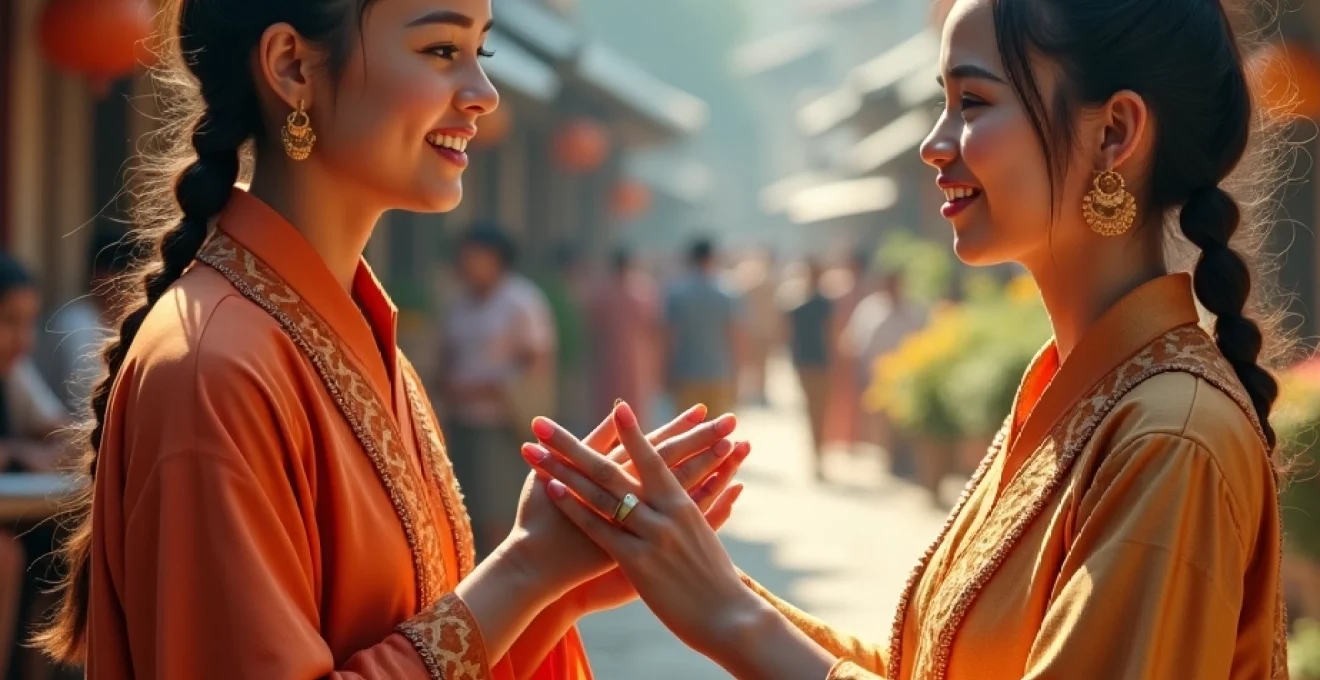
Local customs and traditions form the vibrant tapestry of human culture, offering fascinating insights into how different societies express their values, beliefs, and social connections. From intricate greeting rituals to elaborate spiritual ceremonies, these customs reflect centuries of cultural evolution and continue to shape daily interactions in communities worldwide. Understanding these practices not only enriches cultural awareness but also fosters deeper appreciation for the incredible diversity of human expression.
Traditional greeting rituals and etiquette protocols
Māori hongi Nose-Press ritual in New Zealand
The Māori hongi represents one of the most intimate greeting customs in the world. During this traditional welcome, two people press their noses and foreheads together, symbolically sharing the sacred breath of life. This practice stems from the Māori creation story, where the divine breath of life was given to the first woman, Hineahuone.
Thai wai hand gesture and social hierarchy
The Thai wai demonstrates the intricate relationship between greeting customs and social hierarchy. This gesture, performed by pressing the palms together in a prayer-like position, varies in height and depth depending on the social status of those involved. The higher the hands are placed, the more respect is conveyed to the recipient.
Japanese ojigi bowing system and angular degrees
Japanese bowing etiquette, known as ojigi, follows precise angular measurements that reflect social relationships and situations. A casual greeting bow typically measures 15 degrees, while a formal business bow reaches 30 degrees. The most profound bow, reserved for expressing deep gratitude or sincere apology, extends to 45 degrees.
Ethiopian coffee ceremony protocol (buna)
The Ethiopian coffee ceremony transcends simple beverage service to become a vital social ritual. This elaborate process can last several hours and involves multiple steps:
- Roasting fresh green coffee beans
- Grinding the roasted beans by hand
- Brewing three separate rounds of coffee
- Sharing conversation and community bonds
Sacred religious and spiritual practices
Balinese galungan festival and penjor decorations
During Galungan, Balinese Hindus celebrate the victory of dharma over adharma (good over evil) by erecting tall bamboo poles called penjor. These decorated poles line every street, creating an ethereal canopy that transforms entire villages into sacred spaces.
Tibetan sky burial (jhator) ceremonies
The Tibetan sky burial practice reflects profound Buddhist beliefs about the impermanence of life and the importance of giving back to nature. This ceremony involves offering the deceased’s body to vultures, completing the cycle of life and demonstrating the Buddhist principle of non-attachment to physical form.
The most profound customs often challenge our preconceptions about life, death, and the boundaries between the physical and spiritual realms.
Native American smudging rituals with sacred herbs
Smudging ceremonies utilize sacred herbs like sage, sweetgrass, and cedar to purify spaces and individuals. The smoke is believed to carry prayers to the spirit world while cleansing negative energies. Each herb carries specific spiritual properties and is used for different ceremonial purposes.
Hindu Thaipusam festival in Malaysia
The Thaipusam festival showcases extreme demonstrations of devotion, where participants pierce their bodies with small spears ( vel kavadi ) while entering a trance state. This intense physical ritual represents spiritual purification and the fulfillment of vows to Lord Murugan.
Marriage and family traditions
Indian mehndi application ceremonies
The application of mehndi (henna) designs before Indian weddings combines artistic expression with spiritual significance. The intricate patterns are believed to bring luck and prosperity to the marriage, while the darkness of the stain supposedly indicates the depth of love between the couple.
Scottish highland wedding handfasting
Handfasting ceremonies involve binding the couple’s hands together with colored ribbons, each representing different aspects of their future life together:
- Red for passion and strength
- Gold for prosperity and wisdom
- Blue for tranquility and truth
- Green for growth and harmony
Chinese tea ceremony (cha dao) protocol
The traditional Chinese tea ceremony represents respect for elders and family unity. During wedding celebrations, the couple serves tea to both families in a specific order, receiving red envelopes containing gifts or money in return. The cha dao ritual symbolizes the formal union of two families.
Romanian bride kidnapping (furatul miresei)
This playful modern tradition involves the “kidnapping” of the bride during wedding celebrations, with the groom required to negotiate her return through tasks or symbolic payments. While maintaining its ceremonial significance, the practice has evolved into a festive game that adds excitement to wedding celebrations.
Marriage customs often reveal how societies balance tradition with evolving social values, creating meaningful ceremonies that connect past and present.
Coming of age ceremonies worldwide
Coming of age rituals mark the transition from childhood to adulthood across various cultures. These ceremonies often involve physical challenges, spiritual teachings, or demonstrations of acquired skills that prove readiness for adult responsibilities.
Food and dining customs by region
Korean jeongkwa tea serving etiquette
Korean tea ceremonies emphasize mindfulness and respect through precise movements and gestures. The jeongkwa ritual requires specific hand positions and serving sequences that demonstrate reverence for both the tea and the participants.
Mediterranean meze sharing protocols
Meze dining customs reflect the Mediterranean emphasis on communal eating and hospitality. Small plates are shared in a specific order, starting with cold dishes and progressing to hot ones, creating a rhythm to the meal that encourages conversation and connection.
Japanese kaiseki Multi-Course rules
The kaiseki dining tradition follows strict seasonal and aesthetic principles. Each course must consider five elements: taste, texture, appearance, color, and cooking method. The presentation sequence is carefully choreographed to enhance the dining experience.
Middle eastern coffee pour traditions
Coffee serving in Middle Eastern cultures follows precise protocols that reflect hospitality and respect. The host must serve the eldest guest first, and guests should accept at least one cup to show appreciation for the host’s hospitality.
Death and ancestral veneration rituals
Death rituals vary dramatically across cultures, reflecting different beliefs about the afterlife and the relationship between the living and the deceased. These practices often involve elaborate ceremonies that can last for days or even weeks, demonstrating the universal human need to find meaning in mortality.